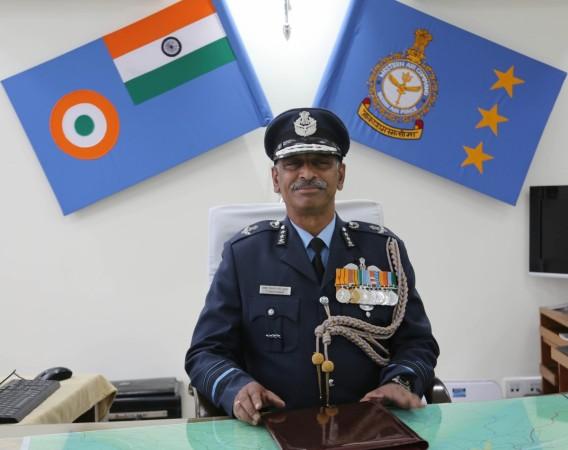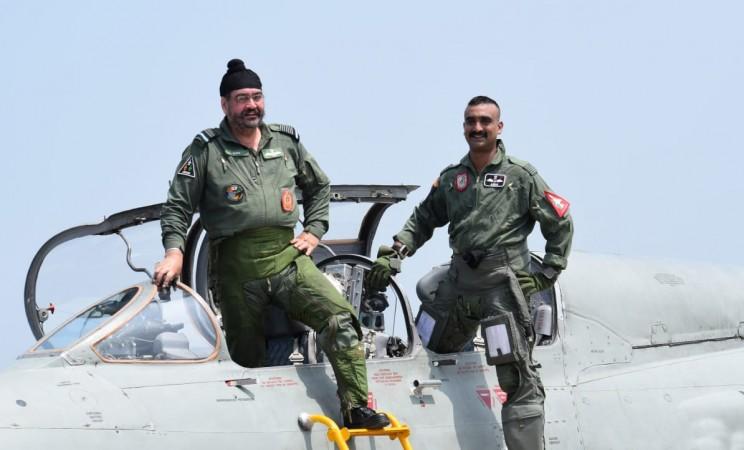
'Bandar' (monkey in Hindi) was the most exciting word that former Indian Air Force (IAF) officer Air Marshal C Harikumar ever shouted to his boss, Air Chief Marshal BS Dhanoa. The then IAF chief was also eagerly awaiting the call as it was the code for the success of the IAF's historic Balakot strike deep inside the Pakistani territory.
Reminiscing the events that led to the strike to avenge the Pulwama terror attack in Jammu and Kashmir, Harikumar, who retired on February 28, said secrecy was the byword for the mission code-named Operation Bandar carried out on February 26.
It was stealthy, quick, decisive and decimated a terror complex of Jaish-e-Mohammed (JeM) in Khyber-Pakhtunkhwa province to avenge the Pulwama terrorist attack on February 14. It marked the IAF's first incursion into the Pakistani airspace since the 1971 Bangladesh liberation war.
Air Marshal Harikumar, who was the commanding officer of the Delhi-based Western Air Command that defends the all-important border with Pakistan, recalled the operation in an interview with ManoramaOnline (Malayalam).
He retired two days after the strike and is now back at his Kerala home living with wife Devika after serving the IAF for 39 years. The officer is happy that the entire operation was a huge success and attributed it to secrecy, tactical brilliance and flexibility.
(Incidentally, the officer's retirement as scheduled two days after the successful operation that grabbed international attention triggered a Pakistani troll storm suggesting he had been fired for the operation's failure.)
The next day IAF beat back a Pakistani attempt to target Indian military assets on February 27, a day after the Balakot strike, triggering international concern of a wider conflict. In the dogfight over the Line of Control (LoC) in J&K, Indian airman Wing Commander Abhinandan Varthaman on a Soviet-era MiG-21 Bison shot down an intruding F-16, before taking a hit by the AIM-120 advanced medium air-to-air missile fired by the US warplane.

Harikumar said in the interview that 12 Mirage 2000 multirole fighter jets took part in the core operation of the deep-penetration strike as the French aircraft have proven their capabilities in war theatres around the world.
The Mirage 2000 from Dassault Aviation, the makers of Rafale multirole fighters India is buying, had undergone mid-life upgrades (MLU) and were known for their speed and ability to fly fast and low to evade enemy radars.
Four Sukhoi-30MKI (Su-30MKI) air superiority fighters accompanied them to ward off any interception attempts by the PAF whose Lockheed Martin F-16 fighters were the main worrying element.
The Mirage fighters, which are normally stationed at the Gwalior Air Base of the Central Air Command, had to be put under the Western Air Command ahead of the strike without arousing suspicion. India's military drills in the Rajasthan desert close to the Pakistani border served as a cover for keeping the strike preparations secret, he said.
The Mirage 2000 jets loaded with 1000-tonne Israeli SPICE-2000 bombs and Crystal Maze air-to-surface missiles that took off in the dead of the night were refuelled in mid-air by tanker planes that flew in from other airbases of the Western Command.
Another group of Su-30 and Jaguar fighter aircraft flew close to the international border as a decoy to give the impression of an impending strike at Punjab province's Bahawalpur base of JeM chief Maulana Masood Azhar. The decision to launch a decoy was made in short notice after radars detected continuous air patrol (CAP) in Rawalpindi close to the air route to Balakot, Harikumar said.

Air Chief Marshal Dhanoa, who was three years senior to Harikumar in the Rashtriya Indian Military College in Dehradun, had told him there should be a retaliation for the Pulwama attack of February 14 that killed 40 paramilitary troopers, after Prime Minister Narendra Modi gave his nod for any response that IAF deemed fit.
While his handpicked team of airmen were getting ready for the deadly operation, Harikumar had to keep up appearances by taking part in a send-off party on February 25. He said he avoided the usual sip of whisky and opted for fruit juice considering the gravity of the ensuing operation.
He also had to briefly rush home to attend his birthday party at midnight to keep up the appearances, he remembered. He rushed back to the command office straight from the party to monitor the operation.
The Mirage 2000 fighter jets were headed to Pakistani airspace in two tight packs of six aircraft each soon after midnight. The decoy worked and the airborne F-16s and surveillance aircraft headed to Bahawalpur, clearing the path for the mission.
The IAF aircraft were back in Indian airspace in 30 minutes after five of the six warplanes offloaded their massive payload with deadly accuracy and obliterating the terror facility, he said.
Harikumar, who joined the IAF in 1979, is a fighter pilot with about 3,300 hours of flying under his belt and had earlier served as commanding officer for the Eastern Air Command based in Shillong as head of the Tactics and Air Combat Development Establishment in Gwalior. He was awarded the top-most military honour of Param Vishisht Seva Medal last year.
Dhanoa has also retired and Rakesh Kumar Singh Bhadauria has taken over as the Chief of Air Staff.








